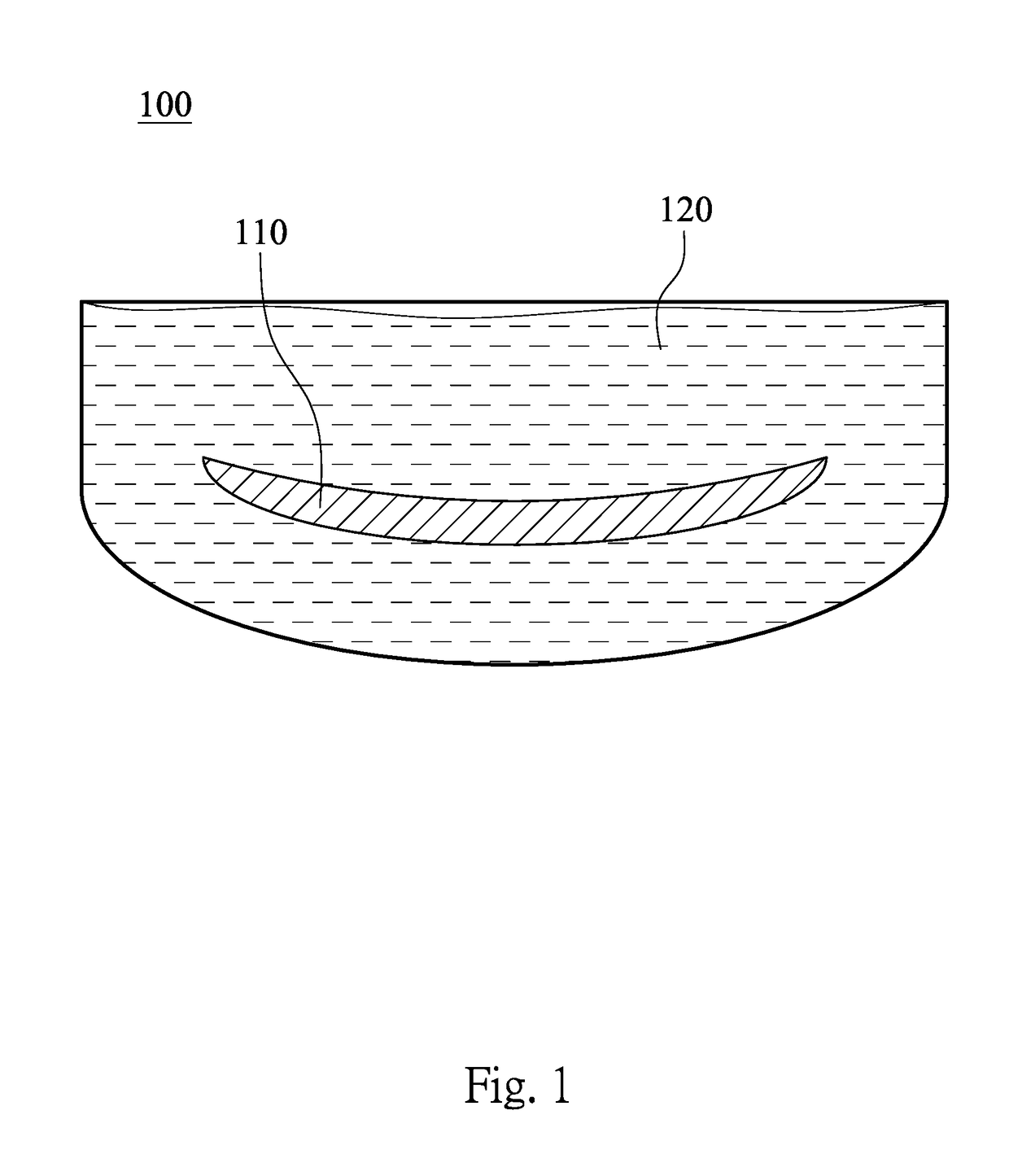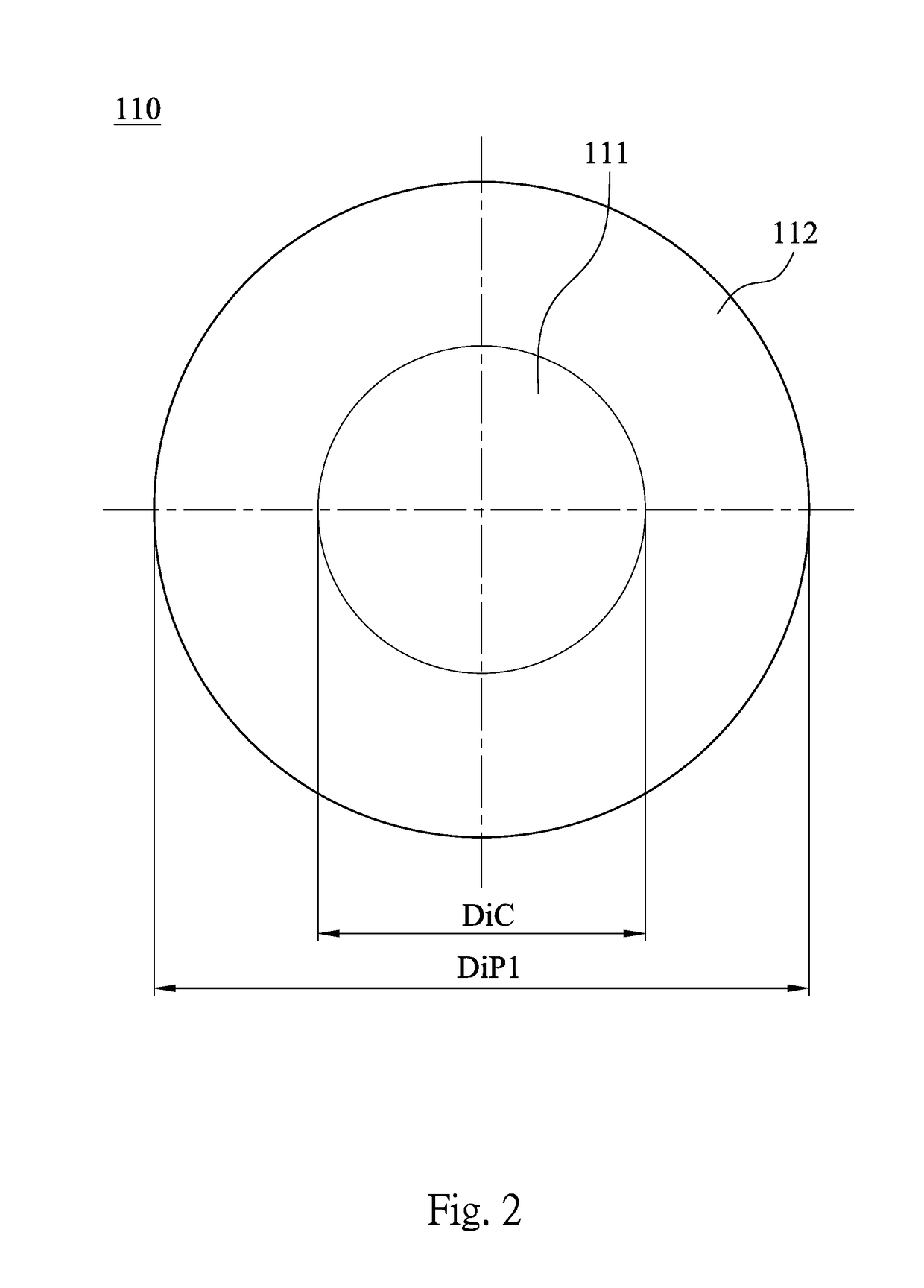Contact lens product
- Summary
- Abstract
- Description
- Claims
- Application Information
AI Technical Summary
Benefits of technology
Problems solved by technology
Method used
Image
Examples
1st example
[0105]In the 1st example, a multifocal contact lens includes a central region and a first annular region. The first annular region concentrically surrounds the central region. At least one of the central region and the first annular region is aspheric. The structure of the multifocal contact lens of the 1st example can refer to FIG. 2.
[0106]In the multifocal contact lens of the 1 st example, a diameter of the central region of the multifocal contact lens is DiC, an outer diameter of the first annular region of the multifocal contact lens is DiP1, a diopter of the central region of the multifocal contact lens is PowC, a maximal diopter of the first annular region of the multifocal contact lens is PowP1, the value of DiC, DiP1, DiC / DiP1, PowC, PowP1, |PowC−PowP1| of the 1st example are listed in Table 1.
TABLE 11st exampleDiC (mm)5.00PowC (D)−0.25DiP1 (mm)13.00PowP1 (D)0.25DiC / DiP10.38|PowC − PowP1| (D)0.50
[0107]Please refer to Table 2 and FIG. 5 simultaneously, radiuses and the corres...
2nd example
[0110]In the 2nd example, a multifocal contact lens includes a central region, a first annular region and a second annular region. The central region, the second annular region and the first annular region are sequentially connected from a center of the multifocal contact lens to a periphery of the multifocal contact lens and are concentric. At least one of the central region, the second annular region, and the first annular region is aspheric. The structure of the multifocal contact lens of the 2nd example can refer to FIG. 3.
[0111]In the multifocal contact lens of the 2nd example, a diameter of the central region of the multifocal contact lens is DiC, an outer diameter of the first annular region of the multifocal contact lens is DiP1, an outer diameter of the second annular region of the multifocal contact lens is DiP2, a diopter of the central region of the multifocal contact lens is PowC, a maximal diopter of the first annular region of the multifocal contact lens is PowP1, a m...
3rd example
[0117]In the 3rd example, a multifocal contact lens includes a central region, a first annular region and a second annular region. The central region, the second annular region and the first annular region are sequentially connected from a center of the multifocal contact lens to a periphery of the multifocal contact lens and are concentric. At least one of the central region, the second annular region, and the first annular region is aspheric. The structure of the multifocal contact lens of the 3rd example can refer to FIG. 3.
[0118]In the multifocal contact lens of the 3rd example, a diameter of the central region of the multifocal contact lens is DiC, an outer diameter of the first annular region of the multifocal contact lens is DiP1, an outer diameter of the second annular region of the multifocal contact lens is DiP2, a diopter of the central region of the multifocal contact lens is PowC, a maximal diopter of the first annular region of the multifocal contact lens is PowP1, a m...
PUM
 Login to View More
Login to View More Abstract
Description
Claims
Application Information
 Login to View More
Login to View More - R&D
- Intellectual Property
- Life Sciences
- Materials
- Tech Scout
- Unparalleled Data Quality
- Higher Quality Content
- 60% Fewer Hallucinations
Browse by: Latest US Patents, China's latest patents, Technical Efficacy Thesaurus, Application Domain, Technology Topic, Popular Technical Reports.
© 2025 PatSnap. All rights reserved.Legal|Privacy policy|Modern Slavery Act Transparency Statement|Sitemap|About US| Contact US: help@patsnap.com



